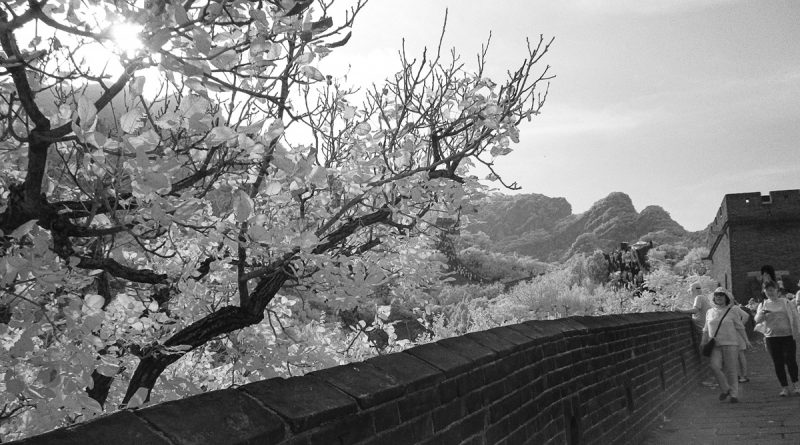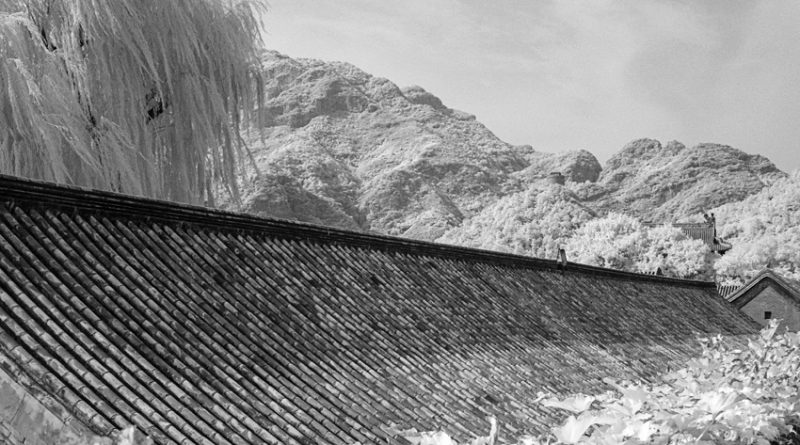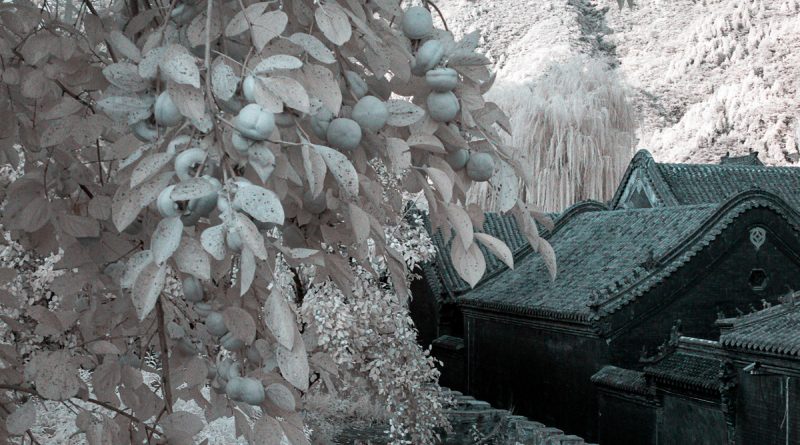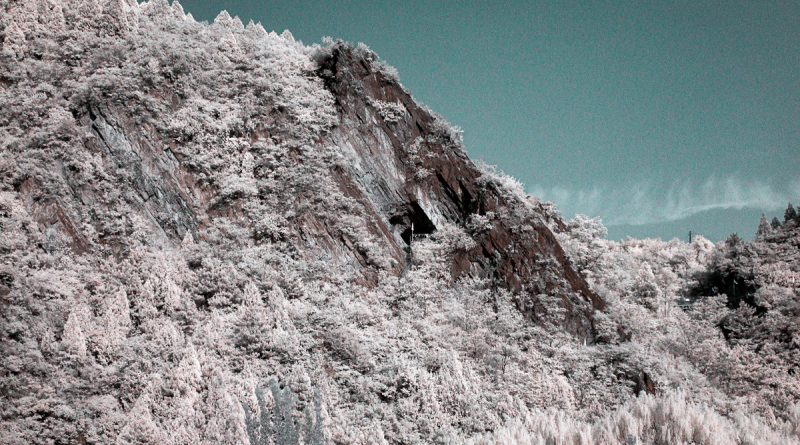No. 47. Changcheng Segments in Infrared
“Changcheng” or “The Great Wall” as seen at Huangyaguan is rated as one of the best, least-crowded places to hike a portion this wonder of the world. In last week’s post, I featured color photos from here. A three-and-a-half-hour bus ride from Tianjin on the coast, the Great Wall even here is not for the faint-hearted, not even in small doses. Steps can be steep and are frighteningly irregular. Still, families with active children and elderly people in reasonably good shape come from all over China and all over the world to partake.
The Great Wall is said to be the world’s longest graveyard with a million workers estimated to have died during construction. Contrary to myth, it cannot be seen from the moon without advanced optics. Also worth consideration is that while it stopped small bands of marauders intruding, the wall did not stop invasions by large-scale armies from over-running the country.
I’ve chosen a mix of black and white and false-color infrared photos derived from similar original captures. Here are infrared photos shot with a 720 nm filter on a full spectrum camera. The camera is a small specially-adapted point-and-shoot.
There is no color in the infrared spectrum. Color is really a matter of perception made possible by the receptors in our eyes capable of interpreting a narrow band of visible electromagnetic-radiation we call “color.” For me, a big part of the appeal is the dreamy, otherworldly appearance of infrared photos resulting from the way vegetation fluoresces when photographed in infrared. Healthy vegetation reflects infrared radiation to prevent overheating, other materials absorb it. Color artifacts that pass through shorter wave-length IR filters (590nm, 665nm, and 720nm) can be manipulated to produce eerie false colors. In the raw state, these images have a magenta cast. By swapping the red and blue channels a more pleasing false-color scheme is produced.













